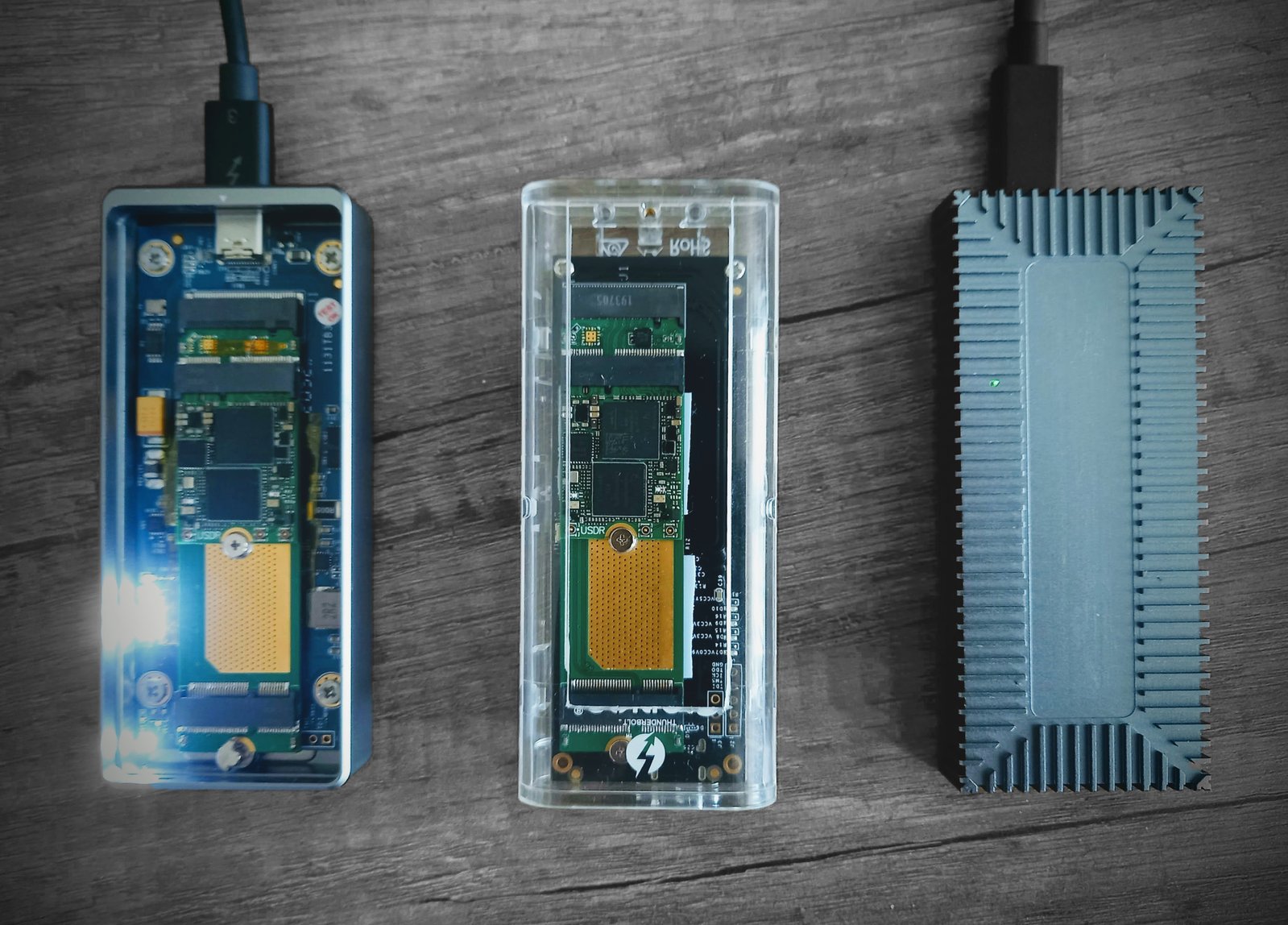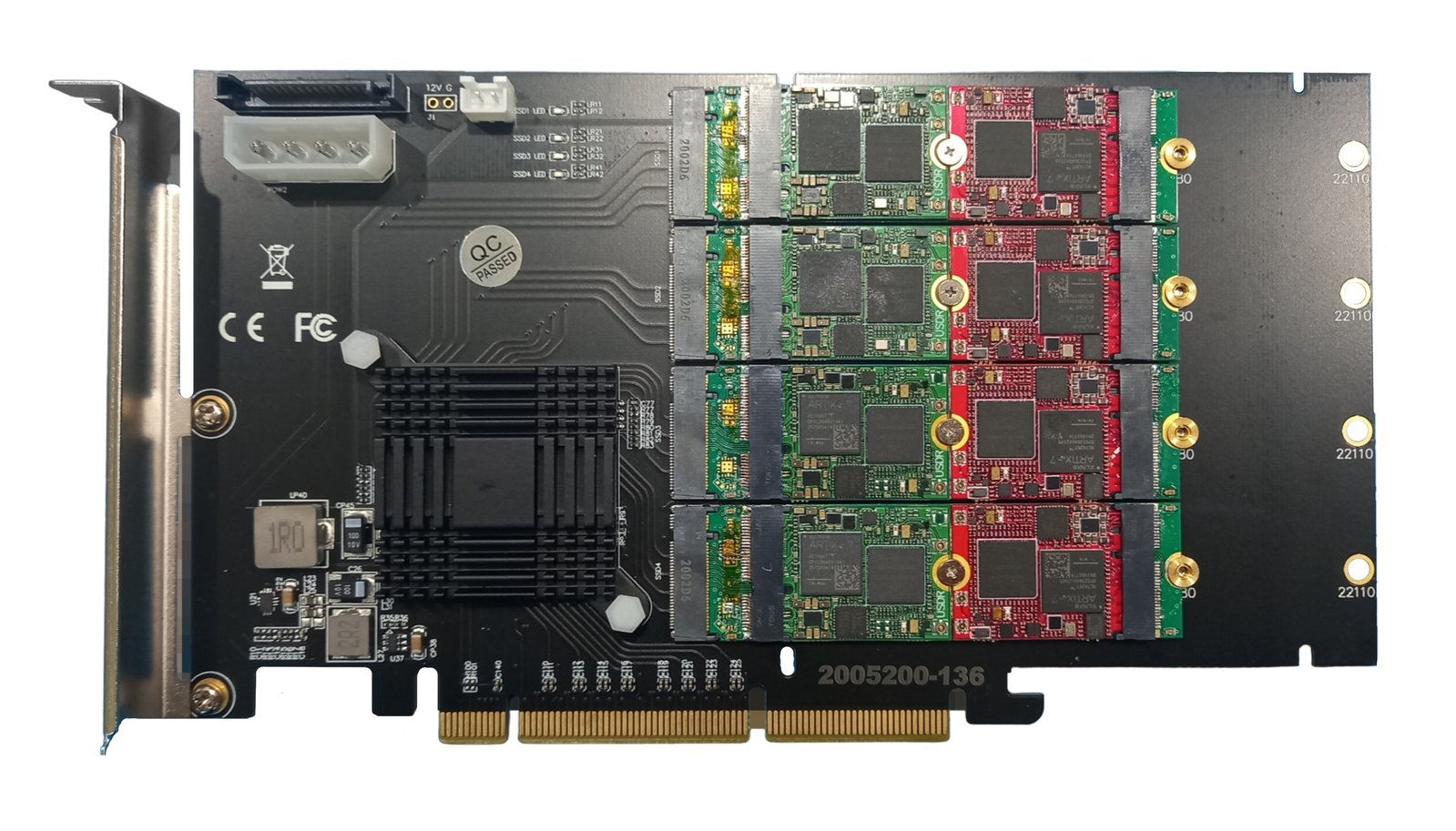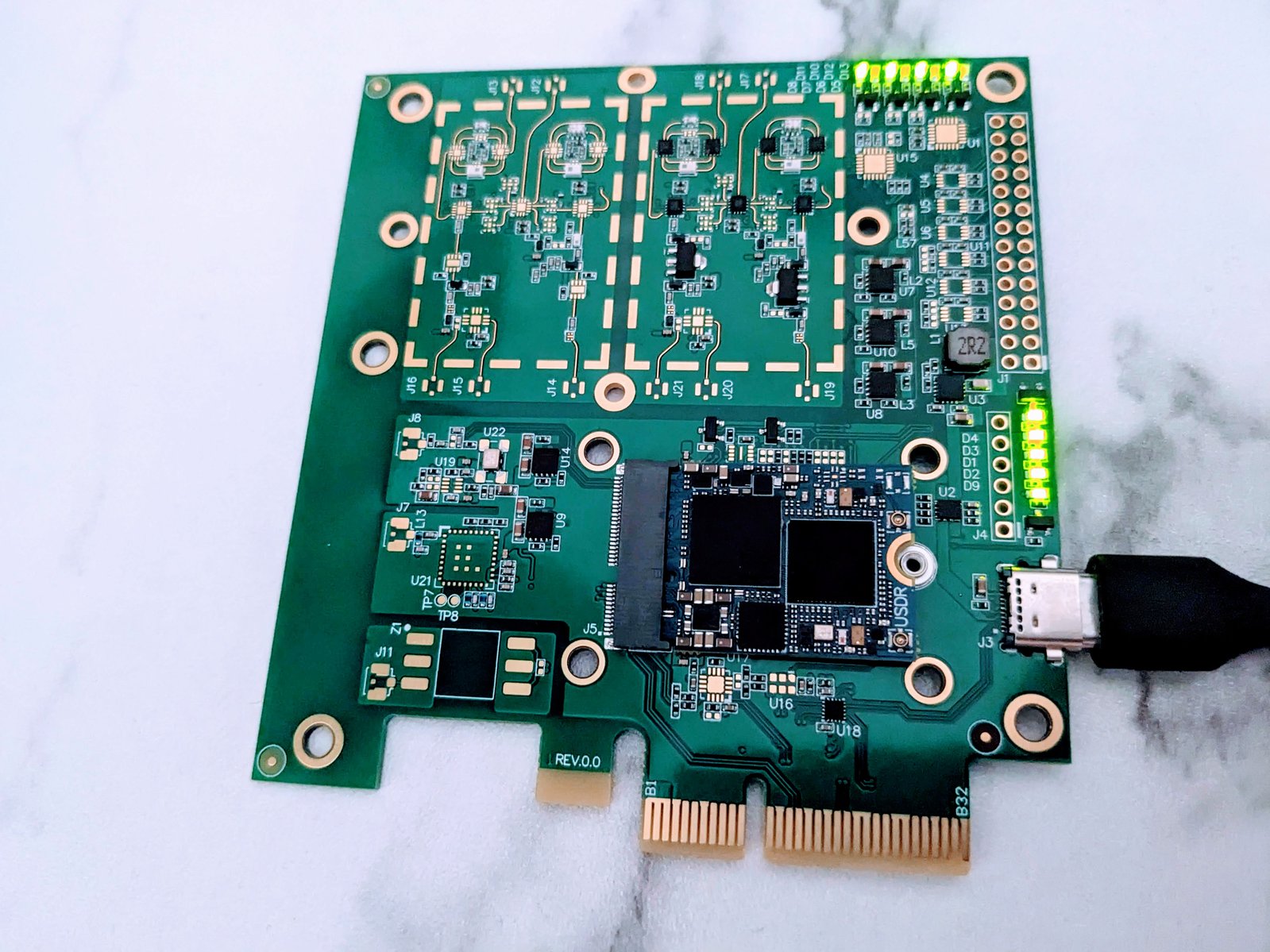Project update 4 of 15
Running uSDR on the NVidia Jetson Platform
by Sergey KostanbaevThe uSDR PCIe driver and software libraries are compatible with ARM platforms. So far, we’ve thoroughly tested it on the NVidia Jetson TX2.
The TX2 board is a bit outdated, so to support Kernel 4.4 we back ported an old interrupt handler for the kernel module. But now the driver is compatible with a wide range of kernel versions.
RK3899 PCIe SBC and CM Pi4 should work fine as well.
USB connectivity with ARM boards works smoothly and, of course, WebUSB.
Unlocking Maximum Performance of uSDR with the Thunderbolt 3 Adapter!
You can find a number of Thunderbolt 3 to M.2 SSD adapters on the market. Using our M.2 M+B adapter with uSDR, it’s possible to make a portable SDR without limitations. So far, we’ve tested:
- Sabrent Model EC-T3NS
- Orico Technologies Co, Ltd. Model TOM2TE3-G40
- Yottamaster Technologies Co, Ltd. Model TB3-T3
And all the adapters just work fine! On the host, the uSDR is seen as a PCI Express device, so it’s only working on Linux for now. A Thunderbolt daemon is required to authorize the device when the Thunderbolt security feature is activated in firmware.
Our PCIe driver is compatible with the sudden device removal feature, so not to worry if you unplug a running device.
Making Multi-channel SDR with an SSD Expansion card
As our backers have noted, it’s possible to build a multi-channel SDR array because of the small form factor of uSDR. Using the M.2 B+M adapter and, for example Adwit’s 4x SSD NME switch board, it’s possible to make a four-channel SDR.
But why stop at four? So you can go even further, we made a special dual M.2 adapter. It’s an M.2 key M 2280 holding dual M.2 key E 2230 boards. The central screw is placed at the same postition as in the M.2 2242, so you can strengthen this adapter using extra position.
This adapter requires PCIe bifurcation to make two uSDRs visible to the system, but Adwit’s PCIe switch ASM2824 supports this coniguration, so that gives eight-channel SDR. Also, this board has a clock buffer to share a single reference clock to two uSDRs.
The cabling gets a bit messy here, but everything works well. The ASM2824 has PCIe 3.0 x8 interface capable of streaming duplex 80 MSps+ to all eight boards without glitches. The limiting factor would be the host processing.
News from the Lab
We’ve received our development board from production and are actively testing. So far everything looks good! USB-C connectivity works fine and the uSDR is fully functional.
We’ll update you once we measure RF performance.
Be sure to visit the uSDR campaign page and order your uSDR before the campaign ends.

















